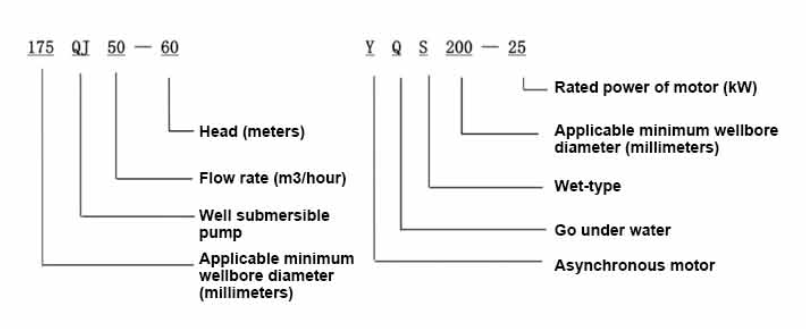Jul . 26, 2024 15:44 Back to list
Exploring the Applications and Innovations of ESP Pump Technology in Modern Industries
Understanding ESP Pumps A Key Component in Oil and Gas Production
Electric Submersible Pumps (ESPs) are crucial devices in the oil and gas industry, especially in the extraction of hydrocarbons from wells. As technology advances, the significance of ESPs continues to grow, owing to their efficiency and reliability in various production environments. This article explores the characteristics, advantages, applications, and future trends of ESP pumps.
What is an ESP Pump?
An Electric Submersible Pump is a sophisticated assembly that consists of a pump, motor, and various other components, all designed to operate underwater. Typically submerged in the production well, these pumps are engineered to lift hydrocarbons from deep underground reservoirs to the surface. The design allows them to handle a wide range of fluid types, including oil, gas, and water, making them versatile in oilfield applications.
Advantages of ESP Pumps
One of the primary advantages of ESP pumps is their ability to manage high production rates efficiently. They can deliver thousands of barrels of fluid per day, making them suitable for high-output wells. Additionally, ESPs can operate in hostile environments, characterized by high temperatures and pressures. This robustness ensures that they can sustain operations over extended periods without significant maintenance interruptions.
Another critical benefit is their adaptability. ESPs can be customized to match various well conditions and operational requirements. With advancements in technology, modern ESP systems now include features such as variable speed drives (VSDs), which allow operators to adjust the pump’s performance based on real-time conditions, improving efficiency and extending the pump's lifespan.
Applications of ESP Pumps
esp pump

ESPs find applications across numerous sectors, primarily in oil and gas production, but also in water extraction and geothermal energy systems. In oil production, they are especially valuable in wells that experience declining pressure, as they help maintain optimal production levels. Additionally, ESPs are employed in offshore applications, where traditional pumping methods may be impractical.
In the water management sector, ESPs are utilized for dewatering applications, particularly in mining and construction projects. Their ability to handle abrasive fluids makes them ideal for such applications. Furthermore, the geothermal industry benefits from ESPs for transporting hot water and steam, showcasing their versatility.
The Future of ESP Technology
As the oil and gas sector navigates the challenges of increasing environmental regulations and the transition to renewable energy sources, the development of ESP technology is evolving. Innovations such as smart sensors and IoT integration are on the horizon, allowing for real-time data collection and analysis. These advancements can lead to more efficient operations, predictive maintenance, and enhanced decision-making processes.
Moreover, the push for sustainability is prompting manufacturers to focus on creating more efficient and eco-friendly ESP systems. Efforts are underway to reduce energy consumption and emissions associated with operation, aligning with global efforts to decrease the carbon footprint of energy production.
Conclusion
Electric Submersible Pumps are an indispensable technology in the oil and gas industry, providing efficiency and reliability critical to extracting resources efficiently. With ongoing technological advancements, the future of ESP pumps appears promising, marked by innovations aimed at enhancing performance and sustainability. As the industry evolves, ESPs will continue to play a pivotal role in meeting the world's energy demands, while adapting to the challenges posed by environmental concerns and shifting market dynamics.
-
Submersible Water Pump: The Efficient 'Power Pioneer' of the Underwater World
NewsJul.01,2025
-
Submersible Pond Pump: The Hidden Guardian of Water Landscape Ecology
NewsJul.01,2025
-
Stainless Well Pump: A Reliable and Durable Pumping Main Force
NewsJul.01,2025
-
Stainless Steel Submersible Pump: An Efficient and Versatile Tool for Underwater Operations
NewsJul.01,2025
-
Deep Well Submersible Pump: An Efficient 'Sucker' of Groundwater Sources
NewsJul.01,2025
-
Deep Water Well Pump: An Efficient 'Sucker' of Groundwater Sources
NewsJul.01,2025
-
 Submersible Water Pump: The Efficient 'Power Pioneer' of the Underwater WorldIn the field of hydraulic equipment, the Submersible Water Pump has become the core equipment for underwater operations and water resource transportation due to its unique design and excellent performance.Detail
Submersible Water Pump: The Efficient 'Power Pioneer' of the Underwater WorldIn the field of hydraulic equipment, the Submersible Water Pump has become the core equipment for underwater operations and water resource transportation due to its unique design and excellent performance.Detail -
 Submersible Pond Pump: The Hidden Guardian of Water Landscape EcologyIn courtyard landscapes, ecological ponds, and even small-scale water conservancy projects, there is a silent yet indispensable equipment - the Submersible Pond Pump.Detail
Submersible Pond Pump: The Hidden Guardian of Water Landscape EcologyIn courtyard landscapes, ecological ponds, and even small-scale water conservancy projects, there is a silent yet indispensable equipment - the Submersible Pond Pump.Detail -
 Stainless Well Pump: A Reliable and Durable Pumping Main ForceIn the field of water resource transportation, Stainless Well Pump has become the core equipment for various pumping scenarios with its excellent performance and reliable quality.Detail
Stainless Well Pump: A Reliable and Durable Pumping Main ForceIn the field of water resource transportation, Stainless Well Pump has become the core equipment for various pumping scenarios with its excellent performance and reliable quality.Detail
